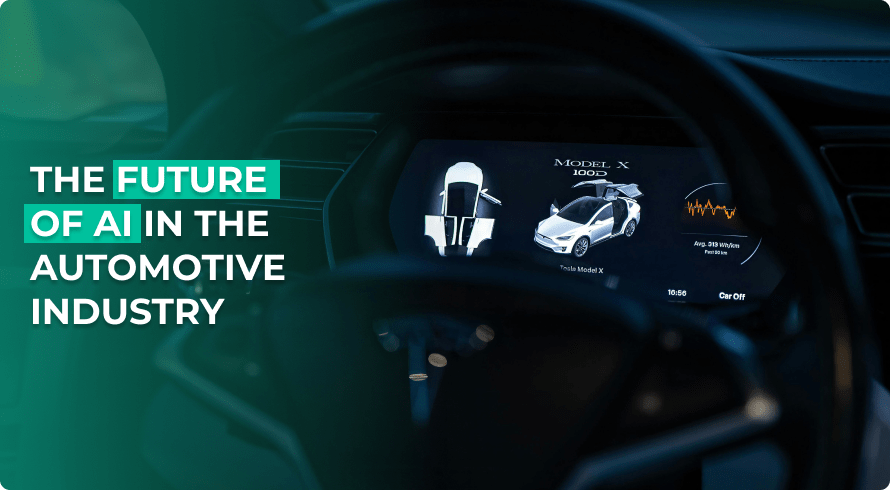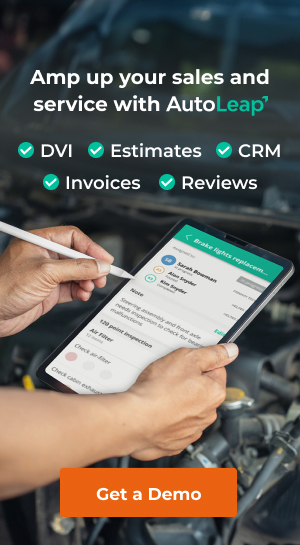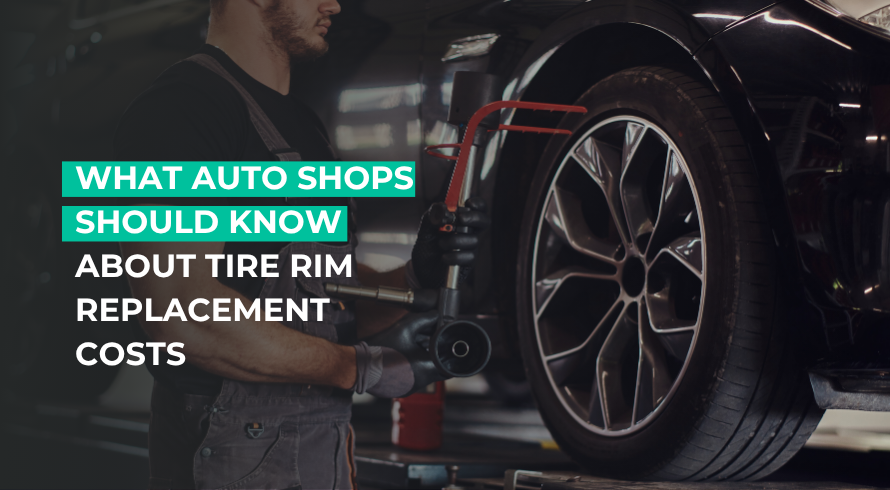Ever wondered what makes some repair shops thrive while others struggle to keep up? Picture this: a world where cars diagnose themselves. Robots do complex repairs and the customer service is excellent. Welcome to the future of auto repair, where AI is the driving force behind innovation. But what exactly is AI, and how is it reshaping the industry? Let’s break it down.
AI, short for Artificial Intelligence, is like having a super-smart computer. It can learn, reason, and make decisions just like a human. Except faster and without needing coffee breaks. It’s the technology that powers everything. Self-driving cars to virtual assistants on your smartphone. In the world of auto repair, AI is revolutionizing how shops diagnose problems, manage inventory, and interact with customers.
Unlock powerful tools to manage your shop. Get the full AutoLeap experience today.
Now, let’s hit the road! And explore the exciting ways AI is transforming the automotive repair industry.
(A) Current state of AI in automotive
➞ General applications of AI in automotive manufacturing and design
- Robotics-assisted assembly: Tesla uses smart robots to help build cars faster and better. These robots do tasks like welding and putting parts together. This helps to make the whole process smoother and more precise. This means Tesla can make more cars in less time, keeping customers happy and costs down.
- Predictive maintenance: General Motors (GM) is like a car fortune-teller. They use AI sensors to predict when machines in their factories might break down. By fixing things before they break, GM saves time and money. It also helps to keep their factories running smoothly.
- Quality control: BMW uses AI to check car parts for any mistakes or defects. These systems use computer vision and machine learning algorithms to analyze images of parts. And then identify any mistakes or defects. By catching defects early in the production process, BMW can maintain high-quality standards. And prevent faulty components from reaching consumers. This helps them make sure every car they make is top-notch. While also keeping the customers happy and their reputation shining.
- Virtual simulations: Ford utilizes virtual simulations extensively in its vehicle design and development process. They use computers to create virtual versions of their cars. And then test their performance before committing to physical prototypes. This approach helps speed the product development cycle. It reduces the need for costly physical prototypes. And enables Ford to bring new vehicles to market more quickly and efficiently.
- Autonomous vehicle development: Waymo, a part of Google, is teaching cars to drive themselves. Their cars use AI algorithms to interpret sensor data from cameras, LiDAR, and radar systems. It helps them to see and understand what’s happening on the road. This helps them to predict and respond to complex driving scenarios. Such as navigating through busy urban environments. Or avoiding obstacles on the road. This makes transportation safer, more efficient, and accessible for all.
- AI’s role in vehicle safety

Artificial Intelligence (AI) powered driving assistance systems are a big step forward in making roads safer. These systems use smart sensors like LIDAR, radar, and cameras. Along with clever AI software. The AI analyzes information from these sensors instantly to do important things. Such as braking in emergencies, helping you stay in your lane, and adjusting your speed automatically. This technology is super helpful in preventing accidents caused by human mistakes.
For businesses, adding these AI safety features meets what customers want for safer cars. It also shows they’re leading in technology. Adding more safety features to cars can boost sales, and customer loyalty, and reduce insurance expenses for drivers. This all makes them more competitive in the market.
(B) AI innovations impacting auto repair shops
- Diagnostic tools: Imagine having a smart tool to tell you what’s wrong with a car. Even before you open the hood. That’s what AI-driven diagnostic systems do. For example, CarMD is a diagnostic tool that uses AI to figure out car problems by analyzing data from the car’s computer. This helps mechanics know exactly what needs fixing. Helping them save time and making repairs faster and more accurate. For repair shop owners, AI diagnostic tools mean less guesswork and more efficiency. They can diagnose problems quicker, which means they can fix more cars in less time. Keep their customers happy and boost their shop’s reputation.
- Predictive maintenance: Picture this: a tool that can predict when a car might break down before it actually does. That’s what AI does for predictive maintenance. For instance, General Motors uses AI to analyze data from cars’ sensors and predict when parts might wear out or fail. This helps mechanics fix problems before they become big and costly. It prevents breakdowns and keeps the cars running smoothly. For repair shop owners, predictive maintenance means less unexpected downtime and fewer surprise repairs. They can schedule maintenance proactively. This helps to save money for both the shop and the car owner and builds trust with customers.
- Smart inventory management: Think of having a super-smart assistant who knows exactly what parts you need and when you need them. That’s what AI does for inventory management. Take PartsTech, for example. It’s an AI system that keeps track of a repair shop’s parts inventory and predicts when parts will run out. This helps shops stock up on the right parts at the right time. It also avoids delays in repairs and reduces costs. For repair shop owners, smart inventory management means less waste and more profit. They can optimize their inventory based on what’s needed. This can improve efficiency and customer satisfaction.
(C) AI in customer service and management
- Chatbots and virtual assistants: Imagine having a helpful friend who can answer your questions. And schedule appointments for you without needing a break. That’s what chatbots and virtual assistants do for customer service. For example, Hyundai uses a chatbot called Blue Link to help customers with things like scheduling service appointments and checking their car’s health. This makes it easier for customers to get the help they need, even outside of business hours. For repair shop owners, chatbots and virtual assistants mean better customer service without needing to hire extra staff. They can handle customer inquiries and appointments efficiently. This frees up time for mechanics to focus on repairs and keeping customers satisfied.
- AI-driven CRM systems: Picture having a super-smart system that knows everything about your customers. And it can also help you give them the best service possible. That’s what AI-driven CRM systems do. For instance, a repair shop might use a system like Salesforce to track customer interactions and preferences. This helps them personalize their services and predict customer needs. For repair shop owners, AI-driven CRM systems mean happier customers and more repeat business. They can keep track of customer information and preferences. This allows them to offer tailored services and build stronger relationships with customers. This leads to more loyal customers and better business overall.
(D) AI-powered repair techniques
- Robotics in auto repair: Imagine having a team of super-strong robots to help with tricky tasks like painting and welding. That’s what robotics in auto repair does. For example, Audi uses robots in its factories to paint cars with perfect precision and weld parts together flawlessly. This makes the painting and assembly process faster and more accurate. For repair shop owners, robotics means faster and more precise repairs. Robots can handle tasks that are difficult or dangerous for humans. This improves safety and efficiency in the repair shop. This saves time and money and ensures high-quality repairs for customers.
- Augmented reality (AR) and virtual reality (VR): Picture wearing special glasses that show you exactly how to fix a car, step by step. That’s what AR and VR do for repair technicians. For example, Porsche uses AR glasses to help technicians see digital instructions overlaid on the real world as they work on cars. This makes it easier for technicians to understand complex repair procedures and reduces mistakes. For repair shop owners, AR and VR mean better-trained technicians and faster repairs. Technicians can learn new skills more quickly and get help during repairs. This improves overall efficiency and customer satisfaction.
(E) The future trends and predictions
In the future, cars will change a lot because of AI. They’ll be smarter and safer to drive. Companies like Tesla are working towards autopilot and smarter navigation. This will help increase safety. BMW is putting AI voice assistants in cars to listen better to drivers.This will help make vehicles more interactive.
Big companies like Mercedes-Benz and Bosch are working together. They want to make cars that can drive themselves even better. This AI change isn’t just about driving. It’s going to make how cars are made, delivered, and helped by companies better.
By the end of the next ten years, most cars might even drive themselves most of the time. And the market for smart car tech is growing fast, from $26 billion in 2022 to a projected $74.5 billion by 2030. So, get ready for a smarter ride ahead!
Closing thoughts
In summary, AI is transforming the auto repair industry for the better. With AI-powered tools like predictive maintenance and robotics, repair shops can work more efficiently. By learning about these innovations, shop owners can save time and money while staying ahead of the competition. With AI on their side, the future of auto repair looks brighter than ever.
The best vehicle lift depends on your shop’s specific needs and requirements. But one quality option is the Triumph NSS8-8.
Concrete for a car lift should ideally be at least 4 inches thick for proper stability and weight-bearing capacity. It should ideally have 6 inches.
A garage should have a minimum ceiling height of around 12 feet to accommodate a car lift comfortably. It also helps knowing the kind of vehicles you commonly get in your area. If you normally work on smaller cars, then 11-12 feet is an ideal garage height.







